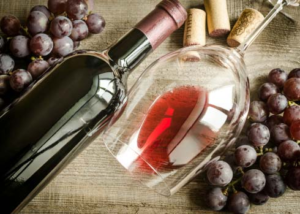They grow Cabernet Sauvignon in Bordeaux. They grow Tempranillo in the Rioja. There’s Chardonnay in Burgundy and Malbec in Argentina. But let’s keep it domestic. Napa Valley has Cabernet Sauvignon; Pinot Noir is grown in the area around Santa Barbara; and Zinfandel is the hot grape in Dry Creek Valley. There are reasons for these grapes in these locations, including terroir, history and farming techniques.
Pinot Noir from Paso Robles. Photo courtesy of Paso Robles Daily News.
But there are some times in your wine tasting travels when you might encounter grapes growing in places where they aren’t expected. For example, Pinot Noir usually grows best in a cool, moist climate. But there are quite a few wines made from that grape that can be found in the hot, dry region around Paso Robles. And in Champagne, famed for sparkling white wines, you can find Bouzy red wine.
So if in your travels you should come across wines made from grapes that shouldn’t be there, what should you do?
- Does it make sense to try these wines? Well, yes, what do you have to lose? More to the point, you may have a lot to gain. Some vineyard managers may take advantage of microclimates on their properties to grow grapes that can take profit from those conditions. So, for example, many of those Paso Robles Pinot Noirs are grown behind the Templeton Gap, which gets its cool, foggy breezes from the Pacific. These wines are never going to be confused with Burgundies, but some of them do express their own terroir, so they’re worth tasting on their own merits.
- Why look for the unexpected wines? That’s one of the reasons to go wine tasting in the first place. If it weren’t for trying these out-of-the-way wines, you could skip wine tasting and stick with your local wine store. In some cases, they may be the only chance you have to taste these kinds of wine at all in that region. We recently wrote about the wines made from Croatian grapes at Grgich Hills. We’ve been to a couple of wineries where we were told that they were the only ones growing Tannat in California. And I can think of only one where we have tasted Peloursin.
- Is it worth the trip to try these wines? Probably not. But that’s not the point. If you’re already tasting the grapes that an area is famous for, trying something unusual is just an addition to your experience, not the basic rationale for an excursion. There are places in Wine Country where the growers plant every grape they can, in hopes that the casual buyer will seek a specific varietal. For the most part, most of these wines are not very good, because of both an unfavorable climate and an unfamiliar farmer. There’s a reason they don’t grow Zinfandel in Canada or Marechal Foch (look it up) in Temecula, California Or, at least, they shouldn’t.
- Are these wines worth buying? If you like them, then sure, go ahead. And if you want to share something really unusual with your friends, these offer the chance to do so. But make sure you explain what makes them unusual. Don’t be a wine snob.
